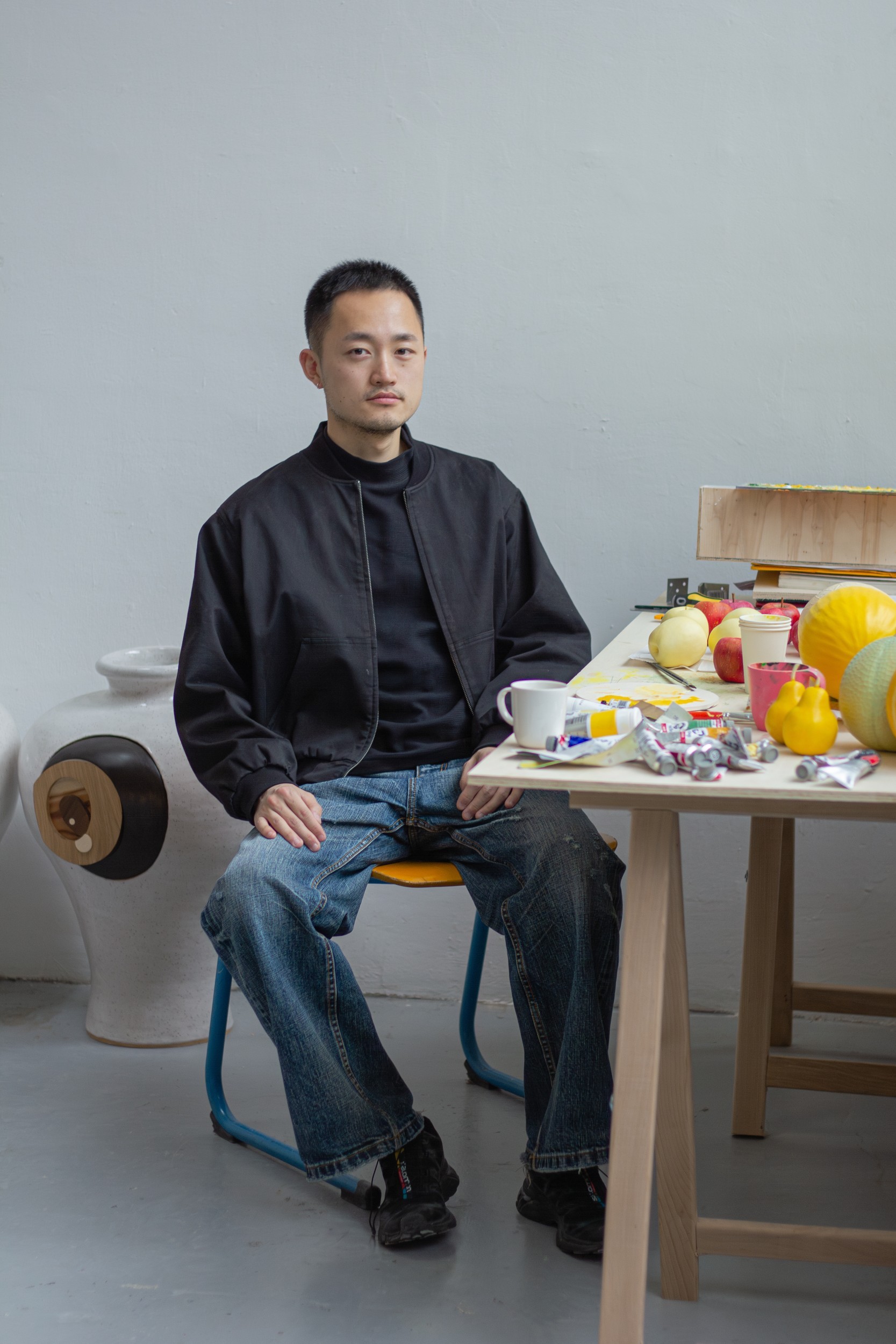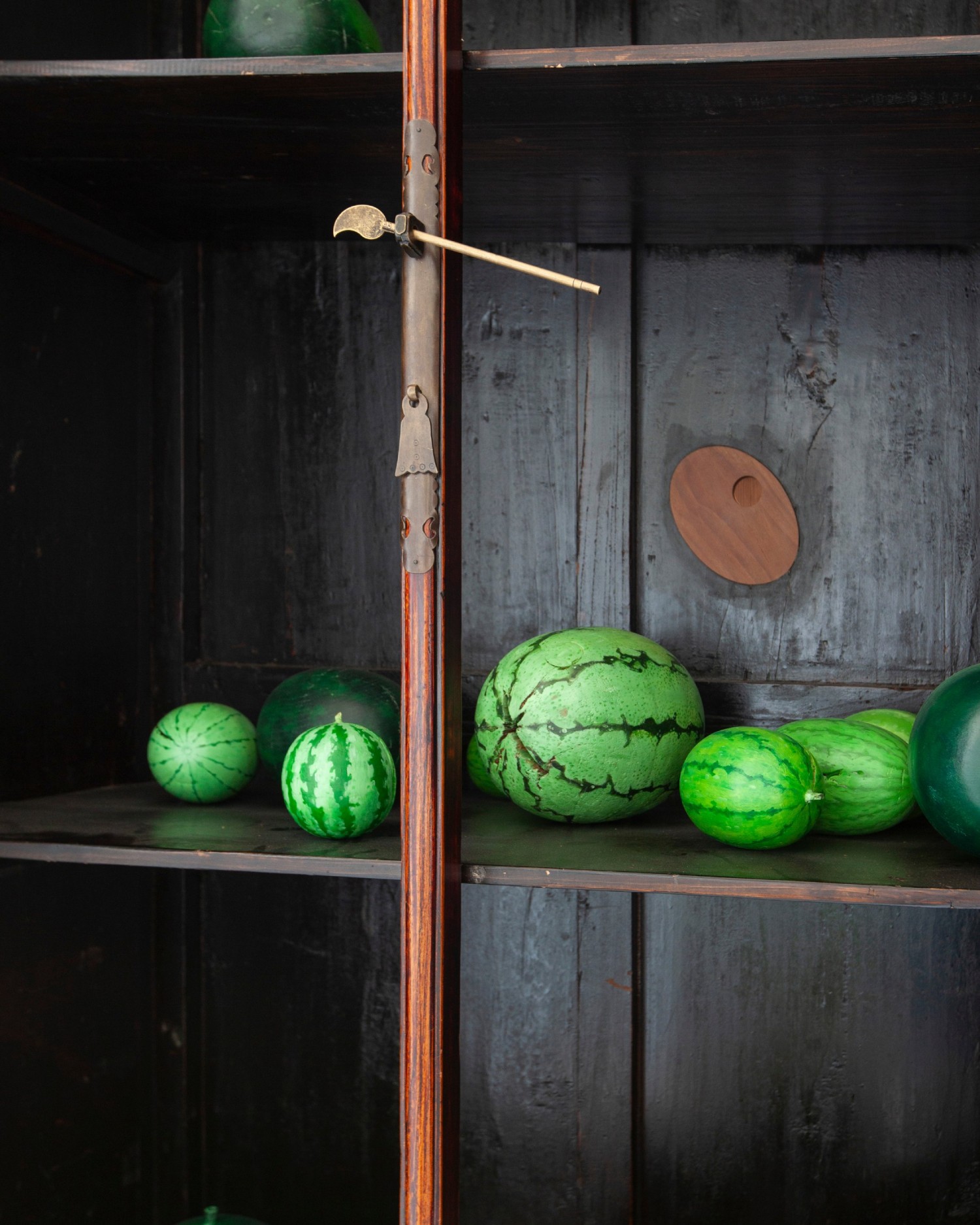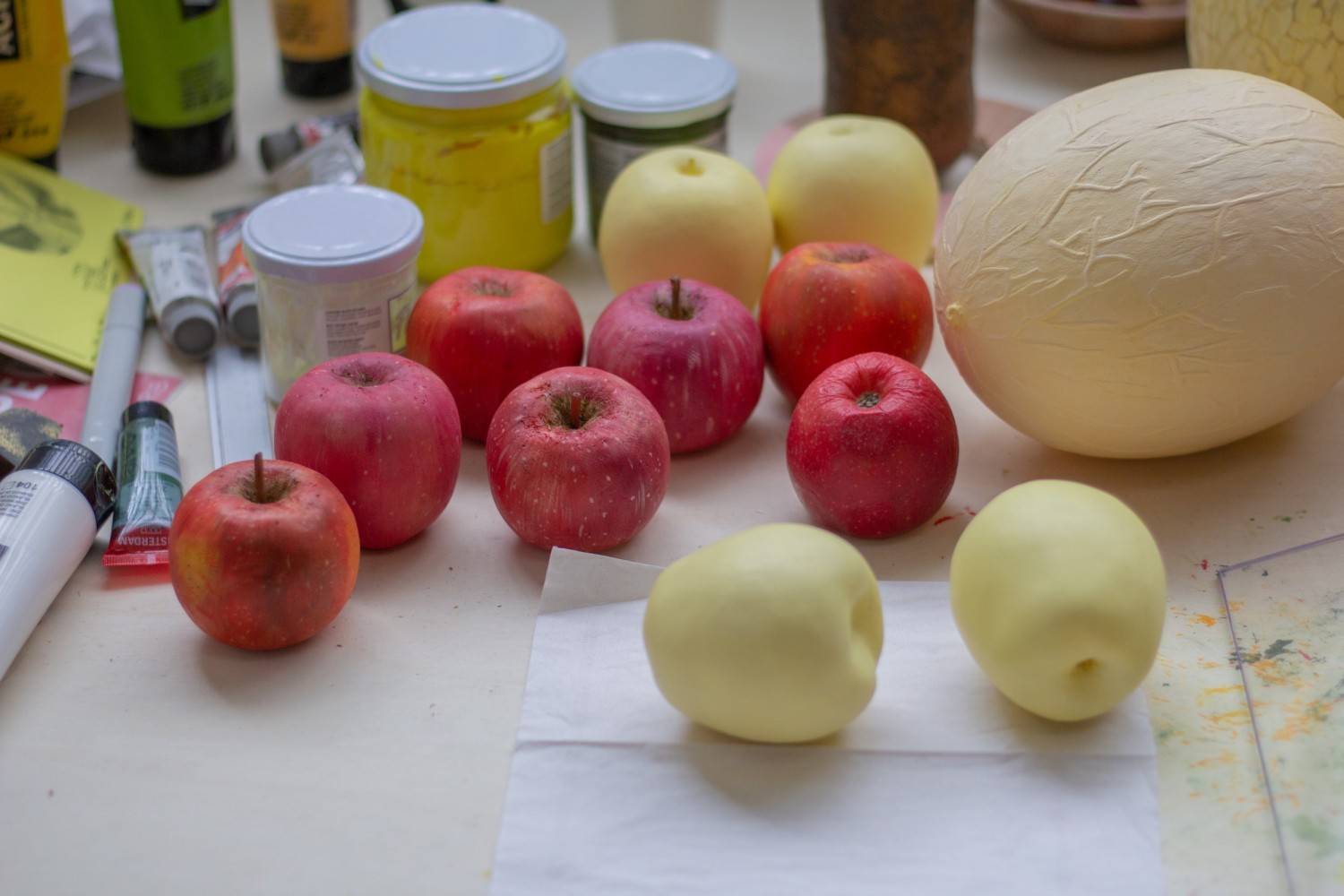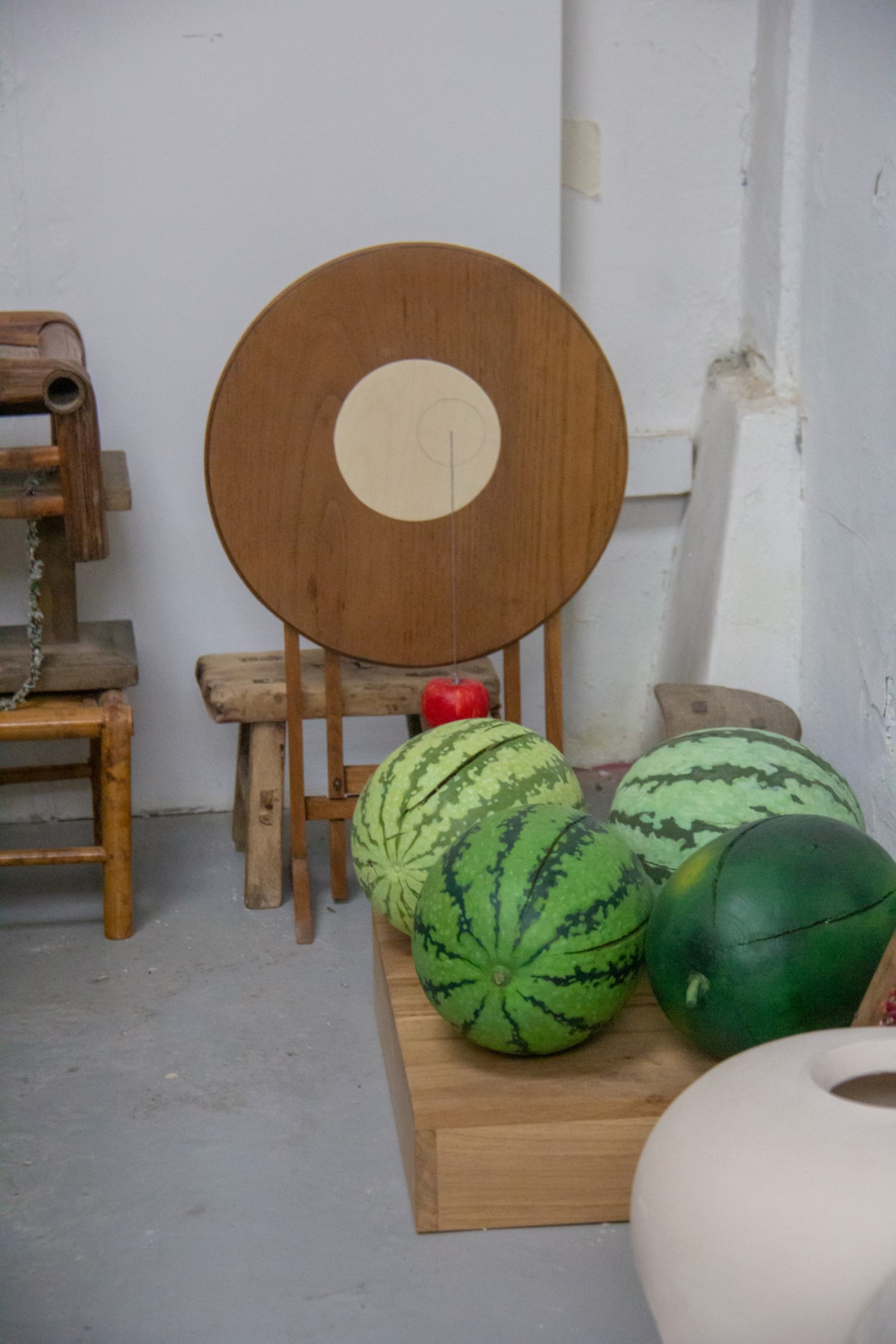Wei Libo © Ye Yi
You work with materials such as wood and ceramics, often linked to memory and tradition. What attracts you to them?
As an artist, the question “Where do I come from?” has always been essential, since the environment, atmosphere, people or things that surround us have a profound influence on artistic creation. My childhood memories are centred mainly on the house my grandfather built. In that house, wood, soil and plants were everywhere, marked by the traces of my grandfather’s manual labour. These memories have instinctively brought me closer to natural elements such as wood and ceramics, materials imbued with human warmth and artisanal simplicity.
For me, wood is a soft, warm material. Whether because of my personal emotions or its physical characteristics, I have trouble seeing wood as something cold. The touch of wood always attracts me: I love feeling its textures, its roughness and the marks that time leaves on it. Wood also has a unique smell, retaining in its core the effects of time, the environment and human imprints. Think of the feeling you get when opening an antique cabinet: the smell of the wood after long confinement is quite special.
But if we move away from the personal dimension to take a more historical, more objective perspective, wood also offers a huge range of possibilities. Still today, we continue to rewrite its history by creating new structures and techniques. For example, as a complement to traditional assemblies such as mortise and tenon joints, we now use modern processes such as thermoforming, gluing and pressing, which respond to the contemporary needs of industry, production and ecology. Wood, as a natural material, contains an infinite wealth of memory, wisdom and inspiration for our era.
When it comes to ceramics, what fascinated me first was the long history of this material. Like wood, it comes from nature and is one of the basic materials (in Chinese culture, it is one of the five elements with metal, wood, water and fire). When it is fired, the clay becomes eternal in a temporal dimension. Thanks to this property, we can go to museums and still admire ceramic pieces handed down over the millennia. Furthermore, the plasticity of clay gives the artist’s hand an incomparable freedom of expression, enabling limitless creativity.
Your work mixes traditional and contemporary elements. How do these materials and forms create a dialogue between past and present?
First of all, if a work is able to establish a dialogue between past and present, it’s not thanks to me, but to the very nature of the materials. Compared with traditional industrial materials or with those used in new production methods such as 3D printing, wood, clay or stone - those natural, basic materials - possess a sort of spirituality. They dialogue naturally with each other. A good creator must first listen to the voice of these materials, understand their aspirations, and then give them the form that best suits them. The artist then plays the role of amplifier, who reveals and spreads these dialogues. This very temporality of the materials is unique and irreplaceable. This is also what gives sculpture as an artistic medium an incomparable advantage over other forms of art.
From a temporal point of view, we humans are always living in the present, anchored in the moment. As an artist, I recount my experiences, my memories and my emotions, which are the fruit of the limited span of my life. I have never sought to hang on deliberately to the past. In my personal journey, I have truly lived and felt what we call tradition. I always express myself in the present, but the materials stretch this temporality out to the infinite, creating a deeper dialogue between past and present. When a work is completed, I hope to be able to step back and, like a spectator, listen calmly to the voice it expresses.
The transformation of materials seems central to your practice. What does this metamorphosis represent for you, both personally and artistically?
I have never really thought about the word “transformation” in my works. Perhaps this is due to the subtleties between languages, but for me, this term seems to have a negative connotation. As if it necessarily implies a radical change from the past, or even a break from certain characteristics or relationships. I prefer describing my work as a “succession” or an “evolution”. It doesn’t really matter how I fashion or use these materials, they’re still wood and clay! I can always clearly recognise them, and close up, an attentive spectator can identify them as well. For example, in the series “Pure Goodness”, the hyperrealistic fruits are still wood, and the cracks in the wood are still visible. They retain their natural form and maintain an intimate relationship with the material. Just like the natural relationship between an unfinished wood cabinet and the wood itself. I have never wanted to cut off this bond. Imagine a material undergoing a “total transformation”: it would then become “mute”, unable to “speak”. For me, that would be terrifying.
I like listening to old songs. Thanks to music, I draw strength and inspiration from my memories and experiences. The same goes for creation: I want to maintain an intimate bond with the past, welcoming this heritage and navigating freely between past and present. The precious things, those that deserve to be cherished, always exist somewhere between these two time frames. And as concerns the future, I don’t think about it much. After all, individuals, like places, never exist within the same notion of time. We don’t have to let ourselves be imprisoned by the traditional concepts of time. •





